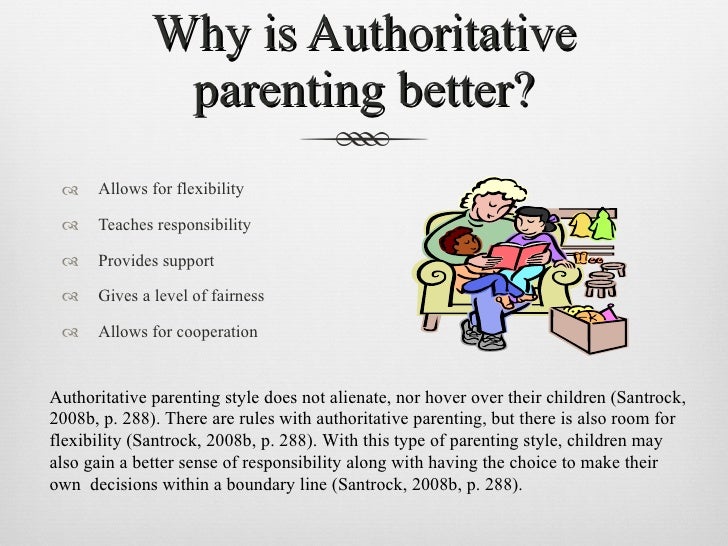 |
| Everyone is a genius. But if you judge a fish on it's ability to climb a tree, it will live it's whole life believing that it is stupid. - Albert Einstein |
As very aptly M.K.Gandhi had put across, Learning is a life skill & one must remain a learner (student) all through his or her life. We all agree with the importance of learning, as this helps us in gaining knowledge, adapting to the changing environment by acquiring new skills, we grow as a person, we are able to transform & improve our life by applying the knowledge we acquire through the learning process.
Knowing the importance of learning, there is no wonder that we come across numerous quotes on learning by great men & women, all over the internet. But if one looks more deeply, one can find almost all these quotes are from the perspective of learning, as a skill/attribute/necessity. For a change, through this blog-post let us take the PERSPECTIVE of a LEARNER. The objectives of this blog-post are [1]. to provide valuable insights of a Learner [2]. application of these key insights for enhancing the learning process (effectiveness & outcomes).
Looking at Learning, from Learner's Perspective:
Note: Educators refers to - parents, teachers (virtually anyone who is involved in imparting knowledge & skills). Learner refers to - students (children, teenagers & adults), virtually anyone who is involved in the process of learning & acquiring new knowledge & skills.
- Interest: Paul Silva of the University of North Carolina refers Interest as "Knowledge Emotion". A learner with interest is characterised by a emotional state of high engagement, sense of being energised & captivated. At a cognitive level, an interested learner pays closer attention, processes information efficiently, engages in critical thinking. At a behavioral level, an interested learner works harder, persist longer & displays self-regulation.
Application areas for educators:
- Make an Interest Inventory of the learner. (a). Provide an environment for exploration for the learner to experience & engage in various activities. Through this exploration, the learner will discover his area of interest & will get engaged into deeper learning. (b). Through standardised Psychometric test or DMIT test, the predisposition interests of the learner can be understood. Armed with this valuable insights the educator can groom the learner into their area of interest, taking them to higher planes of learning.
- Make learning interesting. (a). To capture the learner's interest & to maintain it, the learning materials should be presented in an interesting manner. The material appeals to the interest if it is novel, has calibrated complexity (not to hard not to easy) & is comprehensible. (b). Learning can be made interesting, by connecting the dots between academic world & the real world. The educator can make use of mentor-mentee interaction, experiential learning, exploratory trips, DIY (Do It Yourself) concepts in their teaching methodology.
- Help in developing interest. Young learner's are oblivious to the wide gamut of subjects/activities, due to their limited understanding & exposure. At this early stage of growing up, educators can play a crucial role in developing the learner's interest by exposing them to new experiences, grooming them in these domains etc. However, the educators should be mindful of walking the fine balance of exposure vs imposing their own interest (wish/dream) on the young learner's mind. An educator should always remind himself, their primary duty is to nurture & allow the learner to blossom to their full potential.
- Help in maintaining interest. (a). The learner while encountering challenging & complex learning materials, can feel low in self-confidence. In such instances the educator should support learner's feelings of competence & self-efficacy. (b). The short term outcomes of marks/grades should be overlooked by the educator & the sole focus should stay on the process of excellence. The larger goal is to cultivate life-time interest that provide us with lasting intellectual stimulation & fulfillment.
- Motivation: In simple terms, motivation is defined as an internal process that makes a person move towards a goal. There are two types of Motivation - Extrinsic & Intrinsic.
In summary, intrinsic motivation drives the learner's learning process in an effortless & sustained manner.
Application areas for educators:
- Understand the intrinsic motivation. The educator, should make an attempt to find out the interests & the intrinsic motivation of the learner. Knowing these fundamental drives, will allow grooming the learner in their field of interest & uplift them towards newer heights.
- Calibrate the extrinsic motivation. Overplaying the cards of extrinsic motivation will not be self-sustaining & can back-fire. If the element of fear/threat/punishment is over-played, it will take away the enjoyment of learning & in due course of time the learner will completely lose interest from this particular activity/subject. Similarly if the element of rewards/prize/gifts is over-played, the learner will perform the task as a means to an end & not as an end in itself. The educators need to have a balancing act & also can combine both extrinsic & intrinsic motivation.
- Maintaining motivation. In the elementary school, students are eager & excited to learn new things. But in the high school, there is decline in their intrinsic motivation for learning & mastering the subjects. Several factors have shown to contribute to this phenomenon - (i). Constant reminders of extrinsic motivators (grades, cut off marks, college admission, job market) causes them to focus their efforts on good grades rather than mastering the subject matter. (ii). Keeping in mind their long term goal, the learner begins to evaluate the school subjects in terms of their relevance to their goals, rather than in terms of only intrinsic appeal. (iii). Learner may become impatient & lose interest with overly structured, repetitive & boring activities, which they encounter at school. The educator, should be mindful of this phenomenon & try to bring in positive intervention for maintaining the learner's motivation.
- Physiological, Psychological & Environmental state: Learning is an active process, involving cognitive, affective & behavioral aspects of the learner. For the learning process to be effective, the learner's physiological, psychological & environment should be optimal, to avoid negative interference to learning process. Let's list out some important positive factors under these respective states: (i) Physiological factors: adequate nutrition, proper sleep/rest, good health (ii). Psychological factors: absence of undue fear/stress/pressure for performance, healthy self-esteem, self-efficacy (self-believe), intrinsic drive (motivation), self-directed learning (self-assessment), self-regulation & above all the joy of learning (iii). Environmental factors: safe & hygienic space in home/school, unconditional love/support from family, opportunity for sports (outdoor activities - release of endorphin which uplifts mood), positive surroundings (material & people).
- Positive intervention, for ensuring well-being of the learner. The educator should be attentive to pick up signals of loss of well-being in the learner. They should bring in positive intervention through counseling the student or the parent, suggesting alternation in their lifestyle (diet, sleep timings etc), parenting approach, learning/teaching methodologies etc.
- Appropriateness to Age & Skill: Learning is an active process involving cognitive abilities & skills of the learner. The learner acquires these abilities in an age appropriate manner (developmental milestones). Therefore introducing a lesson which is below the age of the learner will not be engage them (not enough challenging/interesting/complex) or introducing a lesson above the age of the learner will overwhelm them (too challenging/complex to comprehend). In both the scenario the learning process will be ineffective with undesirable outcome.
- Plan lessons in accordance to learner's age & skill. Educator should factor in age & skill appropriateness of the learner, for ensuring learning effectiveness & for achieving the desired outcome.
- Be mindful of chronological age (biological) & maturity age of the learner. An educator, cannot apply the rule of thumb of only biological age. There will be variance in individuals, wherein few are more matured compared to their biological age & few are less matured compared to their biological age. Hence the educator has to plan the lessons, taking into consideration the learner's biological age & maturity age.
- Learning Style: The individual preferences & individual differences in their learning approach is called Learning style. There are many theories about learning style & one of the most popular one is Neil Fleming's VAK/VARK model. The acronym stands for, V - Visual learning, A - Auditory learning, R - Read/write learning & K - Kinesthetic learning. Everyone has a mix of learning styles. Some learner's may find that they have a dominant style of learning. (i). The Visual learners prefer using pictures, images & spatial understanding, (ii). The Auditory learners prefer using sound & music & (iii). Kinesthetic learners prefer using body, hands, sense of touch (experiential learning). The learning process would be most effective, when the learner is able to leverage upon his dominant learning style.
- Understand Learner's dominant learning style. The educator can pick up clues about the learner's dominant learning style, through close observation. The Learning style can also be found out by standardised psychometric test or DMIT test. Based on this knowledge, when the teaching methodology is customised to suite an individual's dominant learning style, the learning effectiveness & outcome from the learner's point of view will significantly go up.
- Multiple Intelligence: Our understanding of intelligence has continuously evolved over the years. Traditionally, intelligence was considered as a unitary attribute. One of the most famous definition of Intelligence was proposed by Binet -Simon, as an ability to solve problems. They standardized measurement of intelligence commonly know as IQ (Intelligent Quotient). [IQ = (MA/CA) x 100] {MA is maturity age & CA is chronological age}. But over the years, the understanding of intelligence has evolved from unitary attribute into multiple attributes. In contemporary time, Howard Gardner's Theory of Multiple Intelligences is most widely accepted. Multiple intelligence are as follows: (i). Verbal-linguistic (ii). Logical-mathematical, (iii). Spatial-visual (iv). Bodily-kinesthetic (v). Musical (vi). Interpersonal (vii). Intrapersonal (viii). Naturalist & (ix). Existential intelligence. Since each learner (individual) have their own dominant intelligence type(s), they bring in their own uniqueness, innate talents & predisposition towards area of learning. Multiple intelligences can be determined through standardised psychometric test, DMIT test.
Application area for educators:
- Newer Pedagogic approaches. Howard Gardner's focus on human potential lies in the fact that people have a unique blend of capabilities & intelligence (skills). Progressive schools/educators, have inculcated the Multiple Intelligences theory in their curriculum development, planning instruction, selection of course activities & teaching strategies for better addressing the learner's need.



















